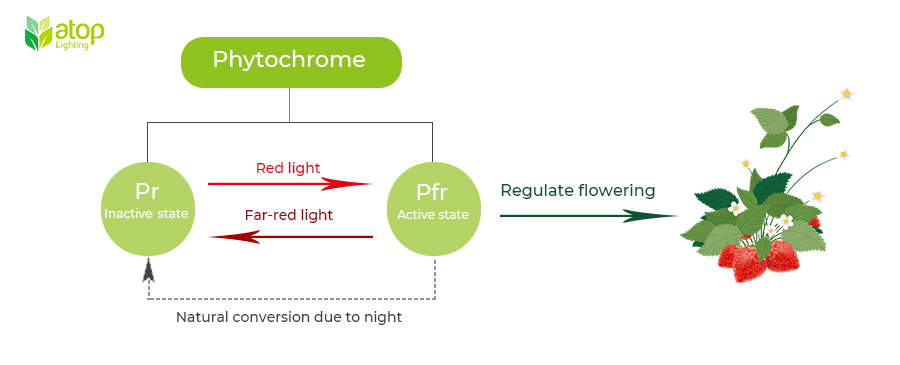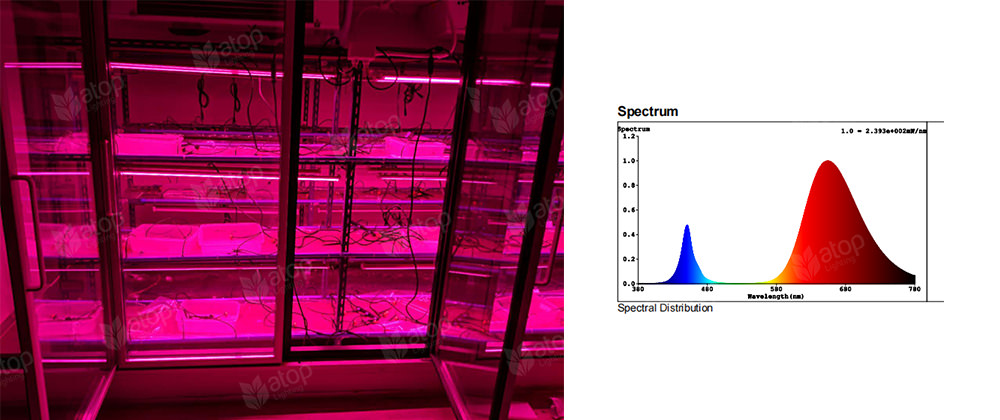Why Does Red Light Affect Flowering
For growers, getting plants to bloom and flower is often one of the most satisfying parts of growing. Many crops, like tomatoes, depend on flowering for yields and quality. Many ornamental plants, such as roses, tulips, and orchids, rely on flowering for beauty and fragrance. But what actually triggers flowering?
You probably know that light is one of the most important factors that influence plant growth and development. When it comes to flowering, one of the most influential colors of light for plants is red. Why is red light so important for flowering? There is a photoreceptor protein within plants called phytochrome. Phytochrome exists in two forms and converts between the two upon absorbing red light. This conversion initiates a cascade of hormonal signals that tell the plant it’s time to flower.
If you want to delve deeper into the answer to why red light affects flowering, read on.
The role of light in flowering
Plants use light not only for photosynthesis but also for sensing changes in day length and season. These changes affect the flowering time of plants, which is the process of producing reproductive structures such as flowers, fruits, and seeds.
Plants possess specialized photoreceptor molecules that perceive and respond to different wavelengths of light. One such class of photoreceptors, called phytochromes, has been extensively studied for their role in flowering regulation. These photochromes are particularly sensitive to red and far-red light wavelengths, with red light being the primary driver for flowering induction.
In addition to wavelength, the duration and intensity of light exposure also impact flowering. Short-day plants and long-day plants have evolved to flower when the length of light exposure reaches a critical threshold specific to that species. The intensity of light can also influence the rate of phytochrome conversion and subsequent hormonal signaling.
How does red light affect flowering?
Red light plays a pivotal role in initiating flowering in plants. This response is mediated by phytochrome. Phytochrome exists in two forms: red-absorbing phytochrome (Pr) and far-red-absorbing phytochrome (Pfr).
Red light can trigger the transformation of phytochrome from its passive Pr form to the active Pfr form. When the Pfr form accumulates, it triggers a cascade of transcriptional changes and hormonal signaling that induce flowering. Pfr initiates the expression of flowering genes while also suppressing genes that inhibit flowering. One key action of Pfr is upregulating the biosynthesis of hormones like cytokinins and gibberellins. The levels of these hormones are a primary driver of flowering.
Meanwhile, Pfr also reverses the Pr to Pfr conversion through a separate photoreaction.
Exposure to far-red light caused Pfr to convert back to Pr. Therefore, the ratio of Pr to Pfr phytochrome or the phytochrome photoequilibrium (PPE), determines the flowering responses of plants.

Optimize red light for flowering
To maximize the flowering response, it’s important to optimize the delivery of red light.
One way to optimize red light is to use the right spectrum. Red light has a wavelength of 600 to 700nm. To trigger flowering, choose LEDs specifically designed for horticultural use that emit wavelengths of 660nm, which strongly excite phytochrome.
Another way to optimize red light is to adjust the duration and timing of red light exposure according to the photoperiodic requirements of your plants. Plants can be classified as short-day, long-day, or day-neutral, depending on their photoperiodic requirements of flowering. Photoperiod refers to the relative length of the light and dark periods in a day. It is measured as the interrupted light time in a given day. Long-day plants require longer photoperiods, typically over 12 hours, while short-day plants initiate flowering when the photoperiod falls below 12 hours. Day-neutral plants are not affected by photoperiod. For short-day plants, supplementation of red light during nighttime inhibits flowering, while adding red light during shorter days can promote flowering in some long-day plants. In our other articles, we’ve discussed the Role of Photoperiod in Plant Growth.
The last way to promote flowering is adding far-red light to the existing red light system. Adding far-red light to red light is effective in stimulating the flowering of a wide range of long-day plants. Thus, choosing supplemental lighting that emits both red and far-red light can maximize the flowering response of most long-day plants.
Atop lighting solutions
At Atop, we provide supplemental red light and far-red light, which has proven to be instrumental in regulating and enhancing the flowering process. With our innovative products, you can take your cultivation practices to the next level and achieve remarkable results.

We also understand that every grower has unique requirements and goals for their crops. That’s why we offer a customized spectrum that precisely targets your specific needs. One such success story involves a valued client who approached us with a vertical farm dedicated to growing strawberries in racks. Recognizing the importance of red light in stimulating strawberry growth, our team provided a lighting solution with a high proportion of red light. Our client was satisfied with the lighting solution.

Looking for customized lighting solutions for your greenhouses, vertical farms, or plant factories? Contact us to learn how we can help you increase production and improve quality.

